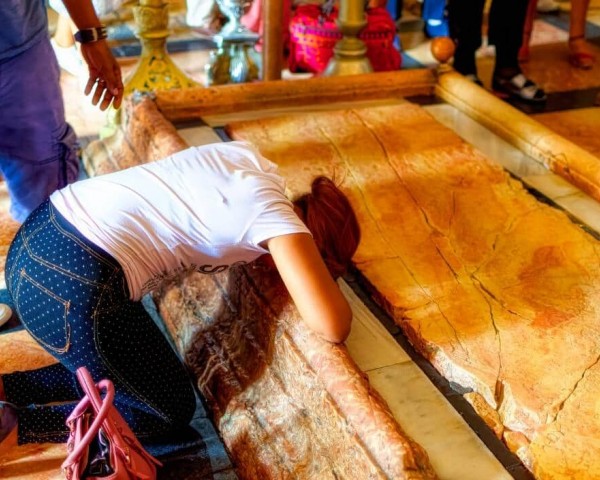The Holy Year 2025 was initially a symbol of hope for Christians in Israel, the Holy Land. However, the ongoing war continues to overshadow religious tourism, affecting Christmas and the upcoming year.
The year 2000 marked the first Holy Year in the Holy Land, intended to be a year of peace. Unfortunately, it ended with a new outbreak of violence that frightened many pilgrims. In 2025, the Catholic world will again celebrate a Holy Year, a special jubilee year with unique liturgical and theological characteristics. Christians in the Holy Land also hoped for a significant influx of pilgrims, but once again, the outlook is grim in light of ongoing war and violence. Even for the upcoming Christmas in Bethlehem, few are optimistic despite the recent ceasefire with Lebanon.
Travel professionals predict a bleak Christmas tourism season. Pilgrims wanting to travel to the Holy Sites face numerous obstacles: flight availability to Israel is limited, and ticket prices are high. Travel warnings from many countries have also made the situation even more challenging.
Three-quarters Fewer Visitors
Since the beginning of the year, the number of foreign visitors to Israel has dropped by approximately 75%, totaling around 900,000. The Israeli ground offensive in Lebanon and attacks from Iran have reduced daily visitor arrivals to about 2,500 during the fall season. Initially, there were expectations for 3.9 million visitors in 2023. The peak year for tourism was 2019, with a record of 4.5 million tourists.
The Christian Information Center, which handles reservations for services at Catholic holy sites in the Holy Land, also confirms the decline in Catholic group visits. Naomi Zimmermann, a Franciscan responsible for the center, reported that fewer than 2,000 groups, totaling around 56,000 pilgrims, are expected to book worship services in 2024. In comparison, the record from 2019 saw about 16,000 groups (approximately 613,300 pilgrims). Without the war, the number for 2023 was predicted to surpass this. In the first ten months of 2023 alone, 13,000 groups visited, bringing in nearly 600,000 pilgrims.
Tourism Is the First Victim of the War
The outlook for the coming year remains bleak. Tourism is typically the first sector to be affected by war and the last to recover. Predicting the development of the security situation is challenging, and past experiences have shown that it can take up to a year after stabilization for pilgrims to return in significant numbers. However, the recent ceasefire with Lebanon, which took effect last Wednesday, offers hope. If this ceasefire holds, local visitors may begin to return, although the numbers will likely be limited due to the season.
Initially, there were high expectations for 2025, mainly because it marks the Holy Year. While the central celebrations will take place in Rome, pilgrims visiting the Church of the Annunciation in Nazareth, the Church of the Holy Sepulchre in Jerusalem, and also the Church of the Nativity in Bethlehem can also receive a jubilee indulgence for the remission of sins, as noted in the papal guidance regarding the jubilee. However, many groups have already opted for alternative destinations, such as Istanbul and Nicaea, coinciding with the 1,700th anniversary of the Nicaea Council.
Second Christmas at War
At Christmas in 2000, church leaders in the Holy Land called for peace. However, with ongoing fighting in the Gaza Strip, Christmas Eve 2024 is at risk of being overshadowed by war for the second consecutive year. Unlike in 2023, this time, the heads of the churches in Jerusalem have urged their faithful to make “public signs of Christian hope” and to celebrate the birth of Christ fully while also considering the profound suffering that millions of people in the region continue to endure.
There is still hope for the return of pilgrims, who are vital for the Christian minority in the birthplace of Christianity, not only financially but also in terms of community support. The Christians in the Holy Land deeply miss the foreign visitors “humanly and spiritually,” as expressed by the prior of the Benedictine monastery of Tabgha.







![How to Visit Ain Dubai – the World’s Largest Observation Wheel [Reopened 2025!]](https://pulseprotravel.com/wp-content/uploads/2025/01/Dubai-Travel-Planner-Ain-Dubai-Depositphotos-324x160.jpg)



![How to Visit Ain Dubai – the World’s Largest Observation Wheel [Reopened 2025!]](https://pulseprotravel.com/wp-content/uploads/2025/01/Dubai-Travel-Planner-Ain-Dubai-Depositphotos-218x150.jpg)
